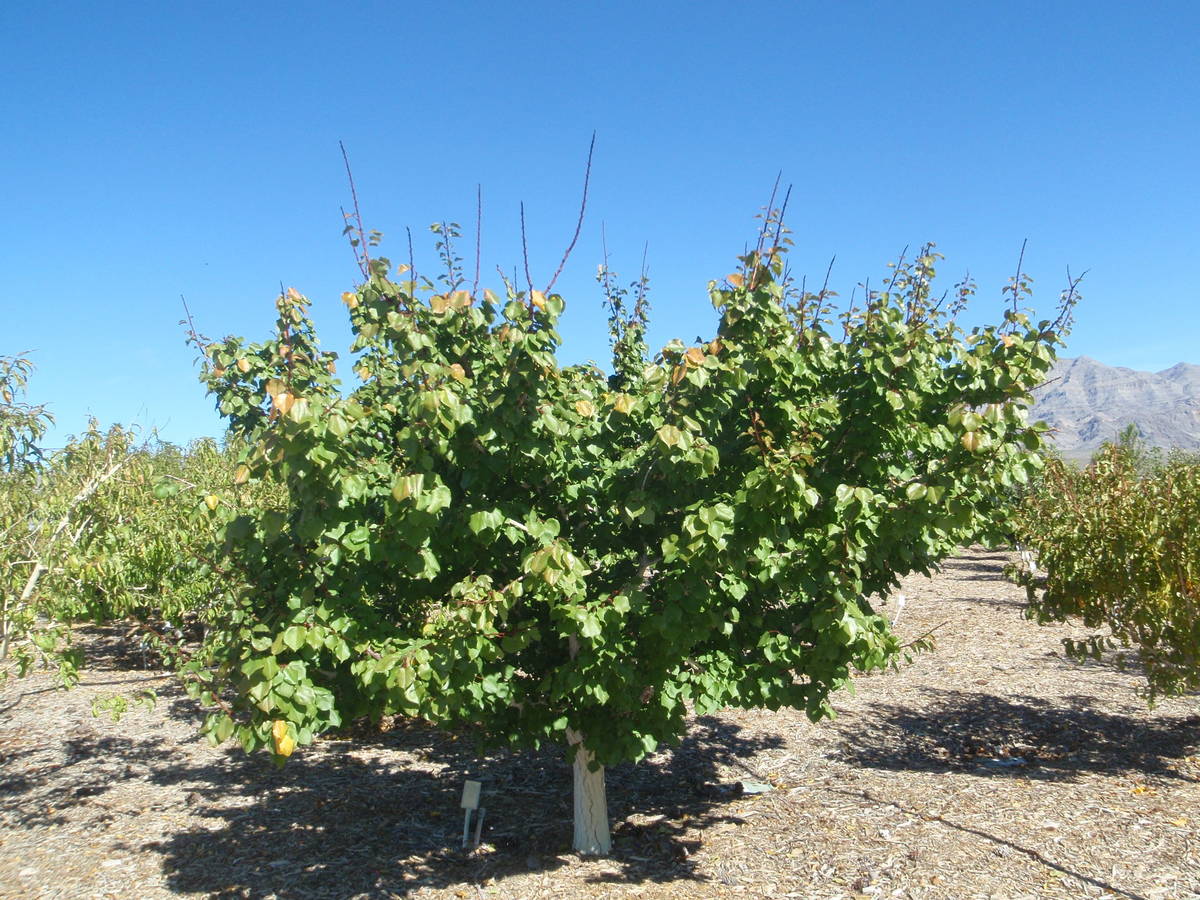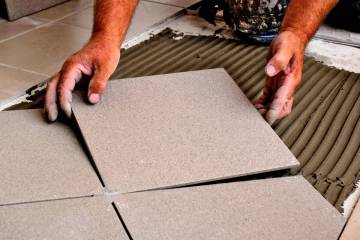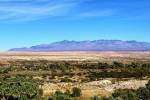Popular weed killers don’t produce immediate results
Q: We have desert landscaping that is no grass but small rocks and gravel covering the soil everywhere. We have grassy weeds coming up between the rocks. I tried Roundup and KnockOut, which the nursery and label said cause the weeds to shrivel up and die in a matter of hours. Not so. Can you recommend another product or procedure to get rid of these weeds?
A: Roundup and KnockOut are the same weed killer. The active ingredient is glyphosate in both.
This active ingredient alone doesn’t produce any results for four to seven days after it is sprayed. You will not see anything happen right away, but the weeds will start to die several days later.
There are some weed killers that have glyphosate and another weed killer mixed with it, so death is the next day. But not these two products. You must have patience when using either one.
By the way, glyphosate is systemic, so it kills the roots as well. But if you just need to kill the tops then there is no reason to use this type of product. Anything that kills the tops works on about 90 percent of the early spring weeds.
Kill them when you see them and don’t let them turn to seed or you will have continued weed problems. Continuing to kill the top of nasty weeds three or four times while they are young also kills the roots, just like a systemic weed killer like glyphosate.
I seldom use chemical weed killers. When I want to kill weeds and they are growing in something that can’t burn, such as rock, I use fire. Otherwise, I use a hoe or hand pull them. A squirt of water, followed by the flick of a sharp shovel, gets rid of most weeds.
When I use fire, I use a decent flame weeder like Red Dragon connected to a propane tank. But I only use fire when I know it can’t burn or melt anything around the weeds. Check with your local municipality to make sure the use of a fire weeder is allowed.
Weeds that are flowering, or finished flowering, will spread by seed. This is what I mean by regrowth. Older weeds follow this lament, “One year of weeds equals seven years of weeding.” Control them when they are young, and do this frequently when they are young, and you will have fewer problems, less overall work and save money.
Q: What is the best apricot tree for our desert and when is the best time to plant?
A: The planting part is easy. Always plant fruit trees either in the spring or fall months when it’s cooler. Bare root fruit trees should be planted by experienced gardeners. If you don’t have the experience, then buy and plant them from containers.
Which apricot tree performs best here is not a simple answer. All the apricot trees available grow here. It’s really a question of which has the best fruit.
Most apricots grown here are used not for canning, freezing or drying. Any apricot can be put up that way, but some perform a little better in this regard than others.
I think you are talking about fresh eating. There are two types of apricot trees available. The older, standard apricot and the newer hybrids (called interspecific hybrids such as aprium) should always be purchased on Citation rootstock for home yards (may be called “semi dwarf” at some nurseries). Citation rootstock helps keep the trees smaller.
In my experience, some of the best tasting and manageable old standard apricots for desert climates are Royal (aka Blenheim), Royal Rosa, Flora Gold, Gold Kist, Gold Cot and Tilton (Tilton is usually for canning but excellent fresh as well).
I usually select apricots ready for harvesting no later than the end of June. Please remember I have not grown all the apricots available, but in my opinion, these are some of the best varieties.
Then there are the hybrids called aprium. Aprium trees are usually smaller and enter production about a year earlier than most traditional apricots. Their fruit looks exactly like the old-fashioned apricot but has a slightly different flavor because it’s a hybrid between apricot and plum. You have probably eaten them if you bought fresh apricots from the store because they are marketed as “apricots.”
I have only grown and tasted two apriums, but I was overly impressed with Flavor Delight and Leah Cot. I’m sure there are others that are great tasting and available as well. I just haven’t tried them yet.
Q: I have a grapevine that started out great this year but is slowly deteriorating. The fruit has started to shrivel and die. I’ve attached a few photos to see if you could offer any help.
A: In the photos you sent I saw no problem with the vine itself, but the bunches of fruit seem to be dying. I would continue watering the vine as you have been. Fertilize the grapes in mid- to late February and make sure that you sanitize hand pruners.
The disease you are seeing on the bunches is collectively called bunch rot disease. This disease attacks the fruit, causing the bunches to shrivel and may be seen either in the spring or the summer months after a spring rain, depending on which disease. When we have dry months in March and April, we seldom see this problem.
Whenever spring rains occur, begin a program of fungicide applications for bunch rot control in grapes even if you don’t see anything. Use copper-containing fungicides such as the old-fashioned Bordeaux fungicide because it is easy to find and considered organic.
Try to fit in three spray applications before harvesting the grapes with the first one during the first two weeks of March. Make sure your last application gives you enough days remaining before harvesting the grapes.
This is called the re-entry period and listed on the label. Follow the label directions and always wash your food before eating it.
Q: My jasmine was a 5-gallon plant that I planted last February. It has grown well but the white flower is turning brown. Can you help me with this?
A: I am assuming you live in the Mojave Desert and this is a traditional jasmine. Quite a few different types of jasmine will grow here, but some do better when protected from late afternoon sun.
Whatever you do, do not plant it on the south or west side of your home. The south and west sides of the home are typically hotter than the east side. But they need as much sun as possible only when it’s cool. When it’s hot and very sunny, they do best with some filtered light or shade.
Notice I didn’t include the north side. You might expect the north side to be cool, but sometimes the late afternoon sun can cause that side to be unbearably hot depending on its exposure to sun.
Plant in a soil mixed with compost and thoroughly water it the first couple of days. The hole should be dug three times wider than the nursery container.
Don’t put this plant in a section of the landscape and then cover the soil in rock. It won’t like it. Use a mulch such as wood chips on top of the soil that adds organics when it rots.
Next is wind. They don’t like wind. Constructing a windbreak will help. Wind damage is not your flower problem but results in torn young leaves and tattered flowers.
Lastly, pest problems like thrips can cause what you are seeing and it’s a possibility. Personally, going on the information you sent me, I think it’s probably planted in the wrong location in your landscape.
Q: Last spring I acquired two yellow flowering hibiscuses. They overwintered in my garden room, which is cool with plenty of light. Now outside, their flowers are pinkish-red and gorgeous. No yellow flowers are seen. Have you heard of this?
A: Two types of hibiscus are out there: tropical hibiscus and a temperate hibiscus. They each have different genetics and breeding programs.
You probably have a tropical hibiscus, which has a lot more flower color possibilities. Tropical hibiscus produces some strange but beautiful flowers. Some hibiscus turn different colors as the flower gets older. Some are multicolored.
Bob Morris is a horticulture expert and professor emeritus of the University of Nevada, Las Vegas. Visit his blog at xtremehorticulture.blogspot.com. Send questions to Extremehort@aol.com.





























